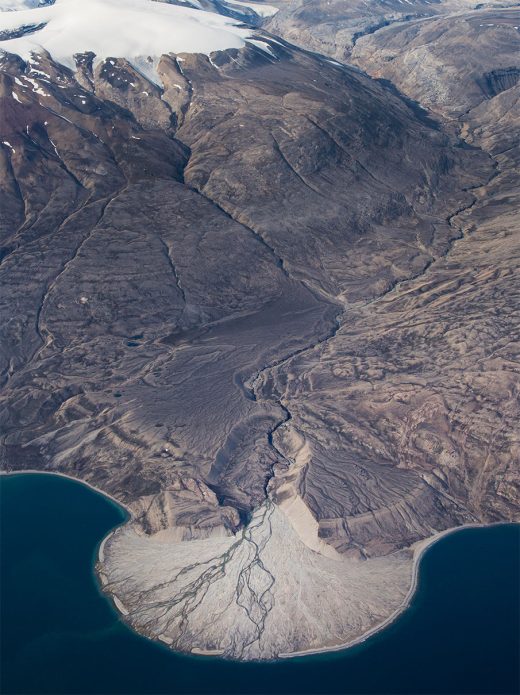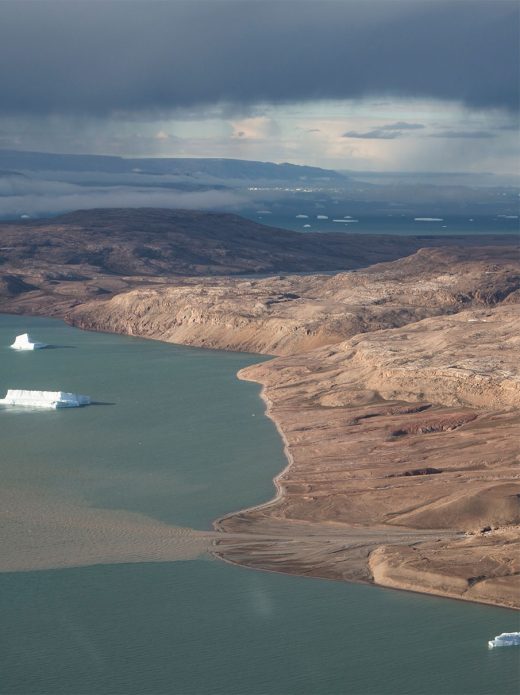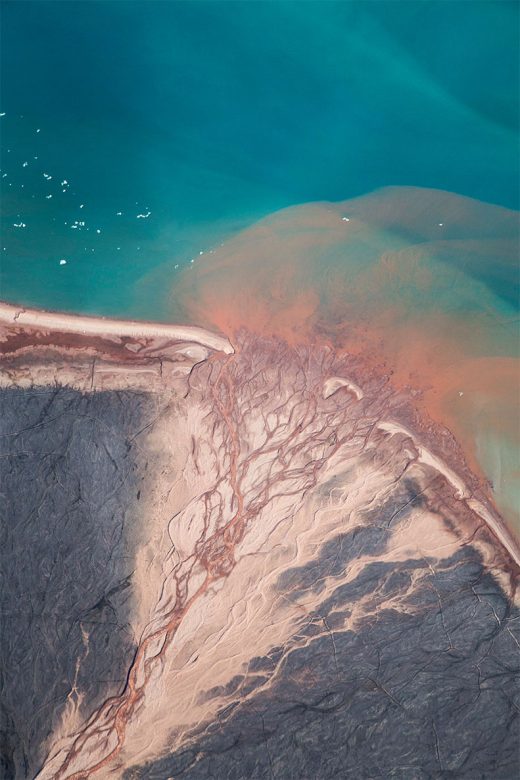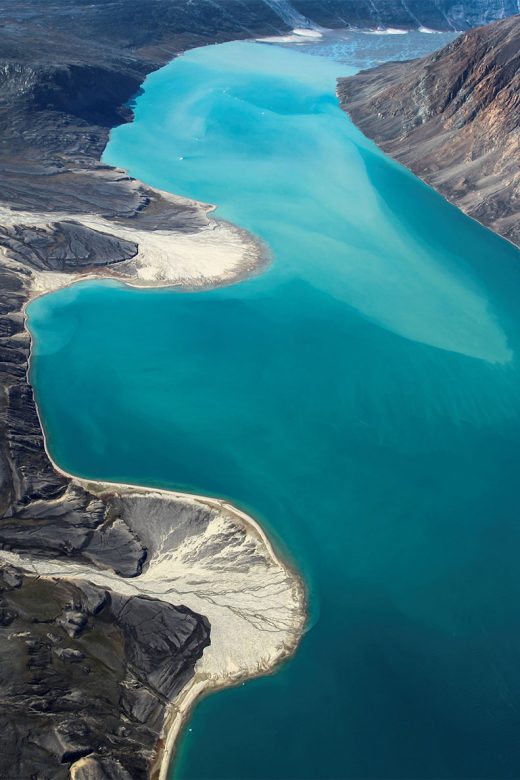Greenland’s Melting Ice Sheet Brings an Unexpected Flow of Wealth Potential
Greenlanders are largely in favor of extracting the sand pouring from their melting ice sheet, as long as Greenland reaps the rewards.
Article body copy
This article was originally published in Mongabay and is reproduced here with permission.
Discussions about Greenland’s rapidly melting ice sheet often focus on what it’s losing. But from around the edges of the ice, a global commodity is being created.
As the ice sheet melts—2022 marks 26 years in a row that Greenland lost more ice than it gained—it’s sloughing off enormous volumes of sediment. That sediment could in turn be extracted to meet the voracious global appetite for sand.
A recent study by researchers at McGill University in Quebec and the University of Greenland, published in the journal Nature Sustainability, found that the vast majority of Greenlandic adults—eight out of 10 surveyed—were in favor of extracting and exporting sand if the projects doing so were under their country’s control.
Sand deposited by Greenland’s melting ice sheet is presenting a new, and controversial, industry for the country: sand mining. Photos by Nicola Krog Larsen
The results surprised researchers given Greenlanders’ at-times fierce opposition to mining projects. But it suggests that in sand mining there’s a model for how Greenland can economically adapt to climate change while moving closer to economic independence from Denmark, which many Greenlanders support.
However, the consequences are uncertain and an environmental impact assessment has not yet been done. Impacts could include sucking sand off the substrate, increasing shipping traffic, and introducing nonnative species via the ballast water of ships. As that information comes out, it may affect public support.
“What I liked about this work was that it gives Greenland a voice in the discussion of climate change,” says lead author Mette Bendixen, a physical geographer and assistant professor in the Department of Geography at McGill University.
Bendixen first realized Greenland’s sediment-producing potential almost a decade ago when researchers determined that something unusual was happening along the coastline of Greenland: rather than eroding rapidly, as was the case with many Arctic coastlines, Greenland’s coast was headed in the opposite direction. Sediment—ground out of the land the ice sheet touches and swept along by its meltwater—was pouring from the ice sheet and accumulating along the coast.
“You can think of the ice sheet as a tap that pours out not just water, but also sediment,” says Bendixen. “And it’s actually pouring out so much sediment that it contributes almost 10 percent of the total river sediment in the world.”
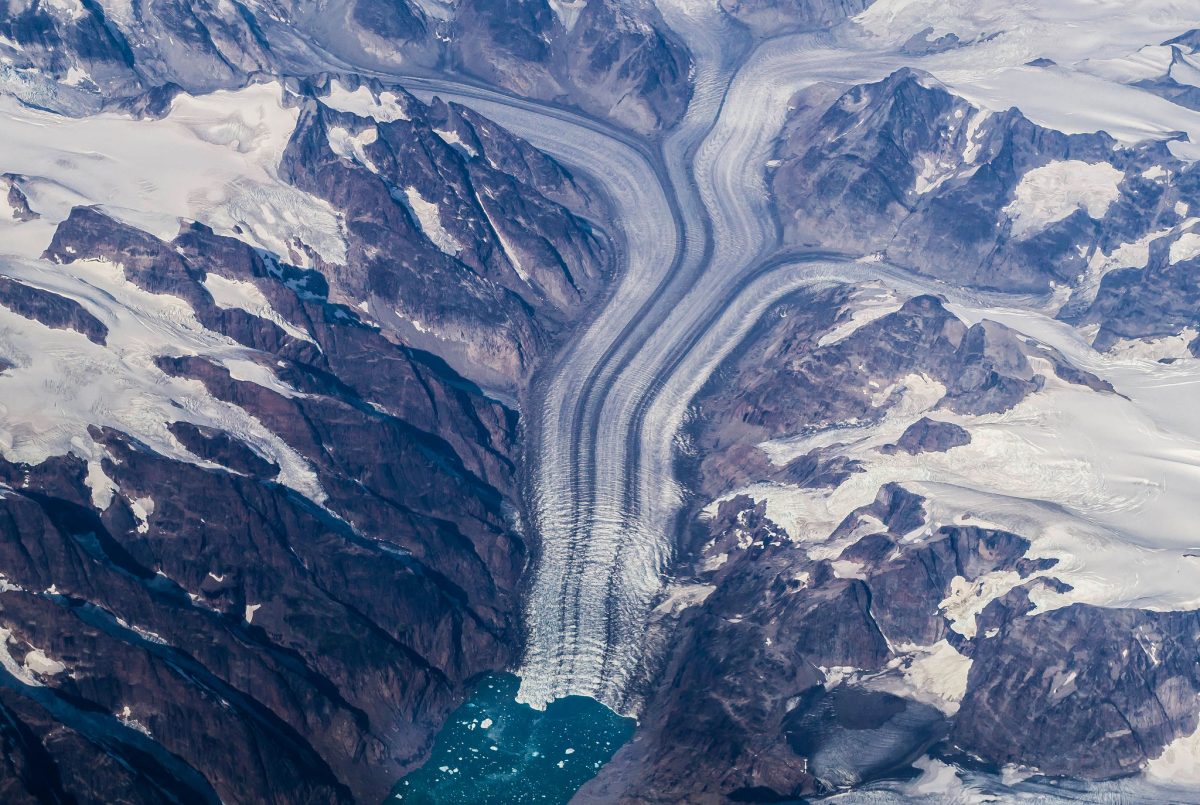
A glacier flows off Greenland’s ice sheet at Tasiusaq, Kujalleq. Photo by Ron Reiring/Flickr
That’s a significant proportion in a world where demand for sand is rising rapidly. In some cases, this demand has had devastating ecological consequences.
While sand, along with crushed rock and gravel, is the base material for everything from roads and buildings to solar panels—and is one of the most traded commodities in the world, by volume—the unregulated extraction of sand is fueling erosion, ecological degradation, and organized crime around the world, according to a 2019 United Nations report.
In 2019, Bendixen and her colleagues published a paper outlining Greenland’s potential to export sand to fulfill some of the global demand. That prompted an immediate response, with five of Greenland’s seven political parties calling for the idea to be explored. But Bendixen says that the study left a crucial question unanswered: what did the people of Greenland think?
This led to the survey of 1,000 adults—roughly 2.5 percent of Greenland’s population of 56,000, about 90 percent of whom are Indigenous—on the question of sand extraction. Some 84 percent indicated support for the activity, with three out of four respondents saying it should be led by Greenlanders.
This support stands in sharp contrast to public attitudes toward other mining projects, which have also been pitched as a response—and a solution—to climate change. These include a rare earth and uranium mine in south Greenland. In 2021, opposition to the Kuannersuit mine helped propel to power the left-wing party Inuit Ataqatigiit (IA), which campaigned on a promise to halt the mine.
Mariane Paviasen, an IA member of Greenland’s parliament, helped catalyze much of the opposition to the mine in Narsaq, a predominantly Indigenous community where many residents depend on farming and fishing. While the rest of the world saw the rare earth minerals found in Greenland as the key to climate salvation, that solution risked coming at the country’s expense, Paviasen says.
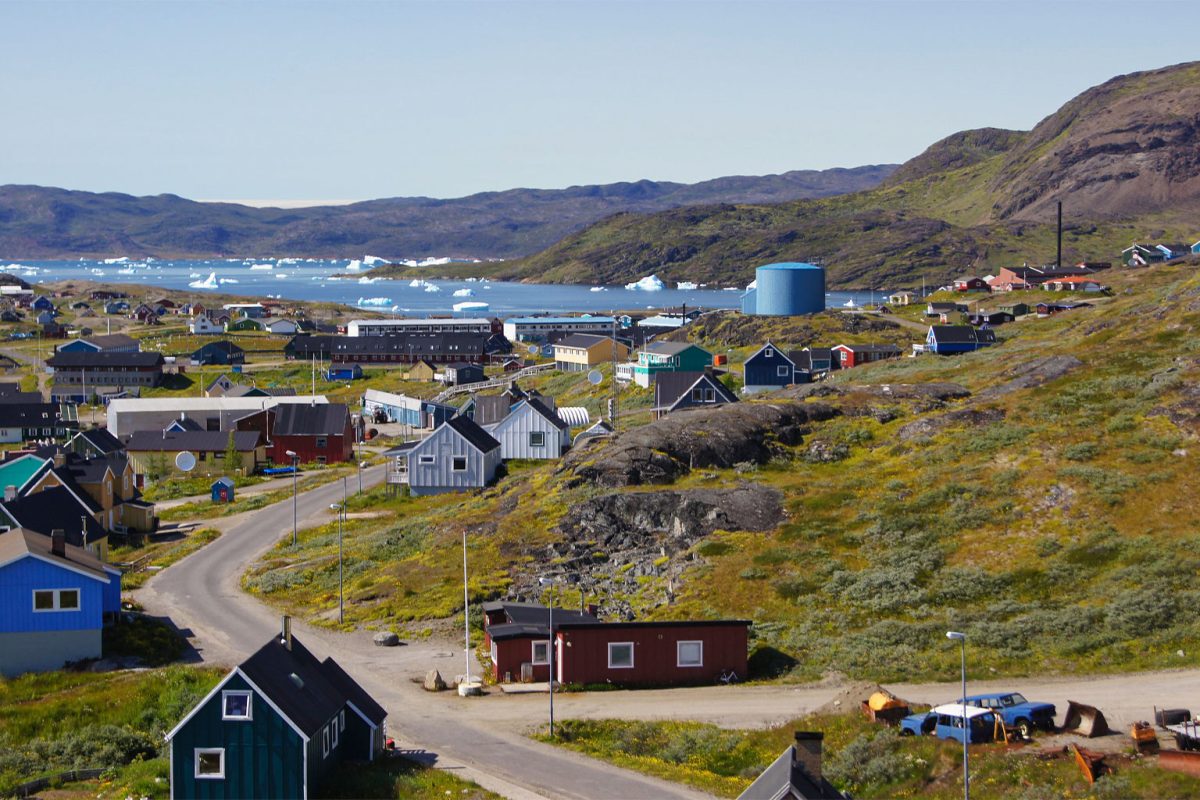
Opponents to a proposed rare earth and uranium mine at Kuannersuit, Greenland, say the project was rejected because of the potential risks to the environment. Photo by jtstewart/Flickr
“We have to maintain clean water, we have to maintain clean air, because we hunt and eat from our sea and our land. That’s why it’s so important that we keep it as clean as possible,” says Paviasen. “If we keep on destroying every corner of the world, what would be left for the next generation?”
Piitannguaq Tittussen, who founded the NGO Friends of the Nuuk Fjord, says past mining projects have already left a legacy of environmental damage. Pollution from the Black Angel lead-zinc mine, which operated in West Greenland from 1973 to 1990, left some nearby areas closed to fishing. Waste rock from the country’s oldest mine, which produced cryolite in south Greenland until 1987, continues to cause unsafe levels of lead in the neighboring fjord (a narrow inlet of the sea between cliffs).
In the 21st century, the melting of the ice sheet that covers 80 percent of Greenland’s surface began to reveal more minerals, including those used in the production of electric cars and wind turbines.
“Everyone saw dollar signs,” says Tittussen, but he was watching out for the potential environmental impact.
This picture was further complicated by the fact that in 2009, the government passed an act on self-government, establishing the people of Greenland’s right to self-determination. This fueled increased interest in resource development.
As it stands, more than half of Greenland’s revenue comes from a block grant from the Danish government and mining projects have been pitched as a way of ensuring greater economic independence.
But critiques of mining projects have pointed out that Greenlanders have not benefited from resource development in their territory. Historically, much of the income from mining went to the Danish state or the international operators of the mines.
Rasmus Leander Nielsen, a coauthor of the Nature Sustainability study and political scientist at the University of Greenland, says even projects proposed in the last decade have not produced the desired results.
“Basically, no income has come to Greenland,” he says. “Some of the heyday of expectations, if you go back to 2010, have not panned out as the optimists, or even the realists, thought.”
Tittussen, who is Inuit, says mining projects have also failed to respect the need to consult Greenlanders. In the case of an iron ore mine proposed by London Mining Greenland A/S, for example, public meetings were held in English, but not Danish or Greenlandic.
“[A manager] told us, ‘You must learn English if you want to be informed,’” Tittussen says. The project eventually collapsed due to lack of financing.
Aerial images show the extent of sediments flowing into coastal Greenland. First photo by Anders Anker Bjørk, second photo by Nicola Krog Larsen
With the Kuannersuit rare earth project, Greenland’s ministry of nature and government reprimanded Greenland Minerals Limited for undermining the department’s authority, including by misinforming the government and contacting civil servants who had no authority in the environmental assessment process. Meanwhile, Paviasen says, Narsaq residents were not consulted enough.
“We were not included enough, and we were never asked what kind of development we would accept in Narsaq,” she says. “That is something we have to do something about.”
When it comes to activities like sand extraction, some Greenlanders’ support is conditional. Tittussen says while it could be a way for Greenlanders to benefit from their natural resources, “it must be [with] better conditions and better environmental protection.”
Paviasen says she’s not opposed to mining as such, including sand mining—so long as projects comply with Greenlanders’ demands.
“If mining companies could do it without polluting and contaminating the area … that would be acceptable,” she explains. “But they also have to talk with nearby inhabitants.”
Either way, at present, the environmental impact and economics of extracting and exporting sand from Greenland are unclear. The government recently completed an assessment of the potential for export to Europe, which concluded there is not yet a business case—shipping sand is expensive—though that could change as global demand for sand rises.
For now, Bendixen says the opposition she’s heard has come from conservation organizations and universities in Europe who view Greenland as an untouched landscape.


